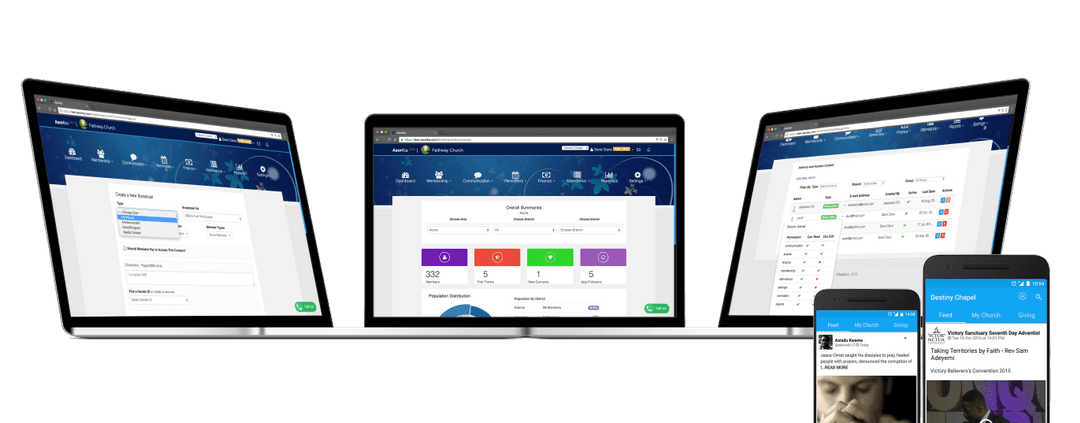Latest Trends In Mobile App Design: Increasing Your Profits
While contemplating the latest trends in mobile app design, we decided to look further into this matter. Specifically, we wanted to explore how various mobile app monetization strategies play out. Should an appreneur implement ads, and if so, what type of ads work best? Or, would it be better to release a paid app or implement in-app purchases instead? These questions, and many more, are questions that we seek to answer below.
1. What Type Of Ads Work Best?
One of the easiest and most effective ways to monetize an app is via advertising. Whether you’re developing a mobile app or game, you should consider implementing ads as part of your monetization strategy. And there’s a good reason to take such an approach. According to Statista, mobile advertising reached $ 190 billion in 2019 and will reach $ 240 billion by 2022.
Nowadays, every apprenuer has several ways to include ads in their applications. We’ll cover the four types of ads that show the most promise:
Banner Ads – Relatively unobtrusive and small-sized ads, placed either at the top or bottom of the screen. They’re easy to implement and remain a popular method for monetizing apps.
Interstitial Ads – These pop up as full-screen ads at specific time frames and feature a close button on the top left or right corner. Interstitial ads work best when they show up only after the user completes a task inside the app.
Native Ads – Designed to naturally fit inside an app and promote an app, product, or service while being relatively unobtrusive. Usually, developers will implement native ads to promote their own products, but this isn’t always the case. The downside is that these ads don’t bring in as much revenue as alternative methods.
Rewarded Video Ads – These shorts video ads (usually a 30-second duration) are carefully integrated with an in-app reward system. Users will watch a video in exchange for points, prizes, and various kinds of virtual goods. Rewarded videos ads deliver high retention and revenue but work best in games or apps with gamification features.
2. How Cost And Profitability Go Hand In Hand?
If you’re an appreneur with a tight budget, then you may cut corners to bring your dream app to fruition. After all, there are several online marketplaces where you can hire freelancers to develop your app at low rates. But this isn’t a good idea, especially when taking into account cost and profitability factors.
Take a look at the highest-rated, popular, and most profitable apps in the App Store and Google Play. What you’ll find is that the top ten percentile of applications are incredibly slick and professionally made. The teams behind these apps have years of experience and comply with best practices in software development. Thus, cheap, low-effort, and unprofessional apps no longer gain traction in digital storefronts. It’s smarter to work with an experienced developer, such as NS804, to create apps that resonate with today’s users.
3. Are In-App Purchases Still Effective?
Yes, in-app purchases offer a robust revenue stream when appropriately implemented in the right type of app. For example, the Uber app offers in-app payments so that drivers can receive payments from passengers. In-app purchases also work great if you’re selling digital goods or have e-commerce functionality in your app. Furthermore, consider adding in-app purchases if you’re offering renewing and non-renewing subscriptions.
4. Should You Sell Physical Products?
Well, that largely depends on the ability of your app and brand to stand out amongst competitors. Fortunately, the latest trends in mobile app design make it easy to test the waters. You can reduce the risk by using Amazon’s self-service program to sell branded goods instead of having to order large quantities from a traditional manufacturer.
If you’re building a mobile e-commerce portal meant to sell physical goods, then you’ll need a robust order fulfillment system to have products delivered to customers successfully. And, if you’re creating a mobile game that draws a fervent fanbase, then it makes sense to sell merchandise, such as caps, t-shirts, figurines, mugs, and posters within the game. But do keep in mind that revenue from merchandise may be inconsistent.
5. Are You Giving Users A Reason To Return?
When developing apps, you’ll undoubtedly think about cost and profitability. You’re investing resources into a project meant to cover its input costs and make a tidy profit.
However, that’s only possible if your app has high user retention and engagement. And to achieve this, you’ll need to give your users a reasonable amount of control. Users have no qualms about uninstalling apps that take control away from them. As with our own experiences, it’s never a good idea to force users to watch unskippable tutorials or input payment information without giving them the option to do so later.
That’s why it’s vital to employ the latest trends in mobile app design. Reduce the steps required to make things happen and allow users to make their own choices. Ultimately, this leads to more satisfied users that feel confident in using your app on an ongoing basis.
6. How Can App Updates Increase Profits?
Users expect regular updates that introduce new features and increase app stability. They want to see that you’re adding the functionality they want and that you’re offering long-term support. If you’re invested in your app, then users feel more confident in continuously using it. And the more time users spend with your app, the greater your profits. Moreover, users are more likely to recommend your app to others if you’re meeting their expectations.
7. Are Subscriptions Better Than Flat-Fee Apps?
Not necessarily. Subscriptions only work well with cloud services and music and video content providers. And the games industry is currently experimenting with subscriptions, but with limited success. App developers planning on using this revenue model will need to continuously innovate so that users keep paying their subscription fees. However, a carefully orchestrated subscription service can become a reliable and growing income source.
8. Will Improving The UX Help?
Yes, and it should be on the to-do list of every appreneur. Users expect a highly responsive UX that’s simplified. Don’t bog them down with a disorganized layout, endless options, and unnecessary complexity. Moreover, implement AI that enhances your app’s personalization component, which will inevitably increase user retention.
9. What Makes Users Want To Pay To Use An App?
Most users won’t pay for apps, but the few that do have high expectations. If you’re planning on releasing a paid app, then ensure that it’s high quality with a full feature set. Utilize the latest trends in mobile app design to make your application more usable and visually appealing. Then, rigorously profile and test your app so that it works flawlessly on a wide variety of mobile devices.
In Conclusion
When taking cost and profitability factors into account, it’s worth considering the various revenue models available to app developers. They can choose to monetize their free applications with ads, in-app purchases, subscriptions, and even physical products. Alternatively, they can eschew all these methods and release a paid app providing its high quality. Contact us today to learn how NS804 can help you develop amazing apps that increase your profits.













Leave a Reply
Want to join the discussion?Feel free to contribute!